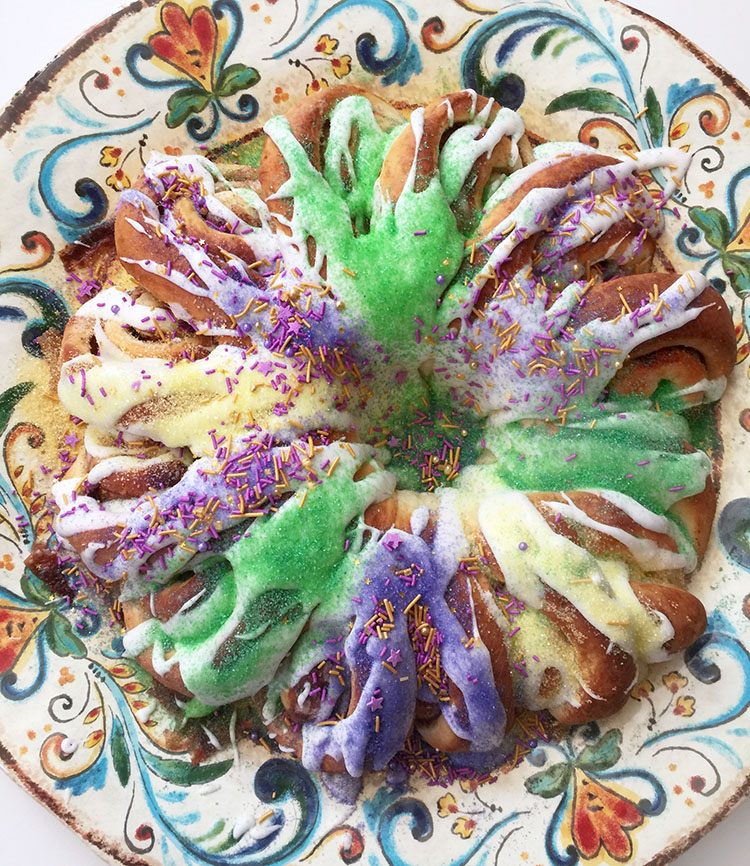
My mother’s basic yeast roll recipe, I knew, had the potential for versatility. From it, she herself made lofty loaves, giant fluffy dinner rolls, gooey cinnamon rolls and those irregularly shaped little planks — cut with a sharp knife from a huge bowlful of raised dough and deep-fried — that she called “skunks,†a name that likely descended from a forebear’s German term of bread endearment, a crisp-chewy creature so irresistible we ate them until we could barely breathe.
This past holiday season, I was really itching to make a tea ring of my mom’s yeast dough. But, as with many a holiday, all the baking and goody making result in one or two things being tabled so long they never get done and must await a future holiday.
But there was king cake! That giant gaudy circle of yeast coffee cake roll, colorfully decorated and brought out in the days leading up to Mardi Gras as a last hurrah of indulgence before Lent. I have written of my experience — and even making — of king cake here before, beginning with my first run-in with this particular baked good, when a promotional package bearing a giant king cake, garishly decorated with icing and gold, purple and green sugars, landed on my desk where I worked as a small newspaper food editor, and my impoverished colleagues and I descended upon it like a pack of emaciated hyenas on a wounded gazelle.
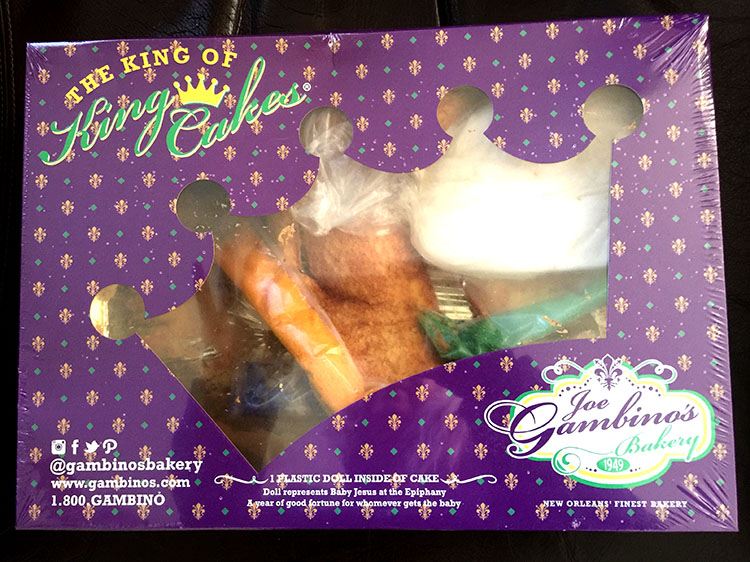
[I] like king cake…last year I was even gifted one! But its rich opulence is really only meant to be enjoyed once a year, or even every other year. Still, I pictured one made as a cinnamon roll-style tea ring. My mom’s basic recipe was a good starting point, a dough that always yields something delicious, so, as Mardi Gras approached, I decided to give it a go.
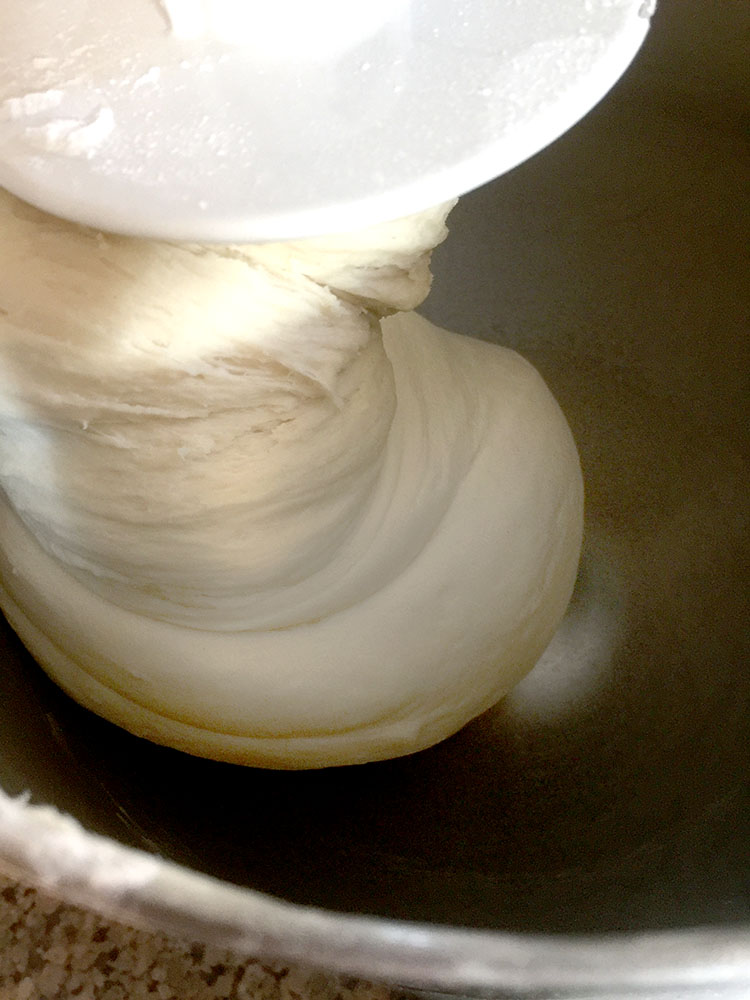
[T]he yeast dough stirs up quite easily initially, it’s the kneading right after the dough is mixed that takes some time. Kneading has never been my strong suit, so I let my Kitchen Aid, equipped with dough hook, give the basic base dough its initial 10 minutes of kneading, and I end up with a nice smooth, warm, fleshy start.
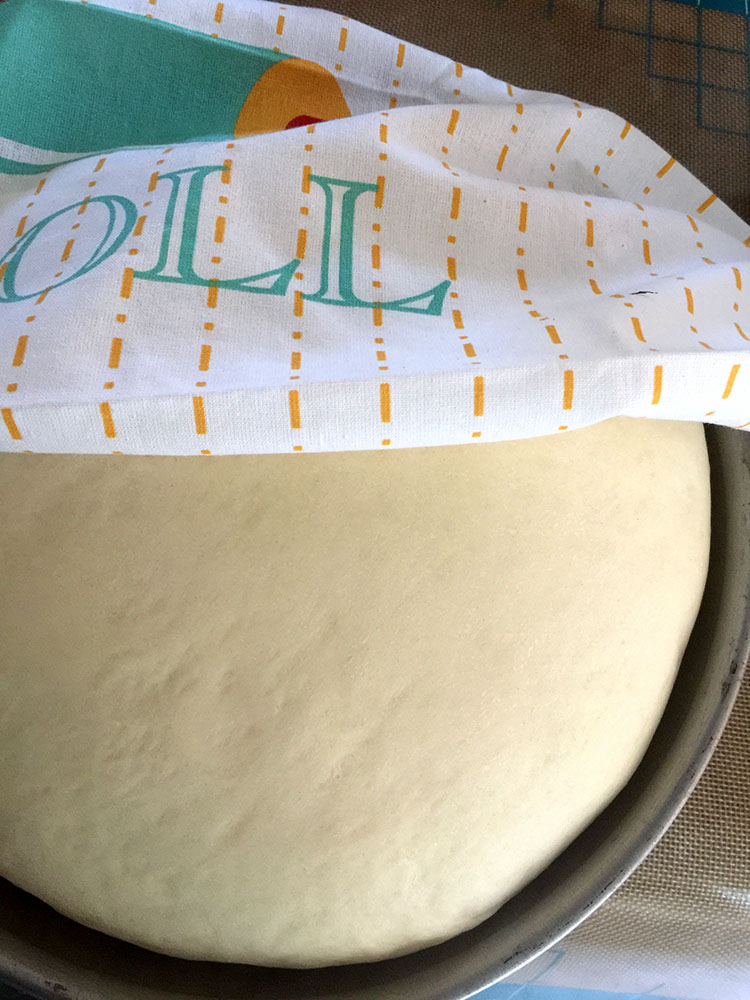
[T]he dough gets a first raising for about an hour. I usually warm my oven up a little and place the dough, in a greased bowl covered with a towel, in the oven and close the door.
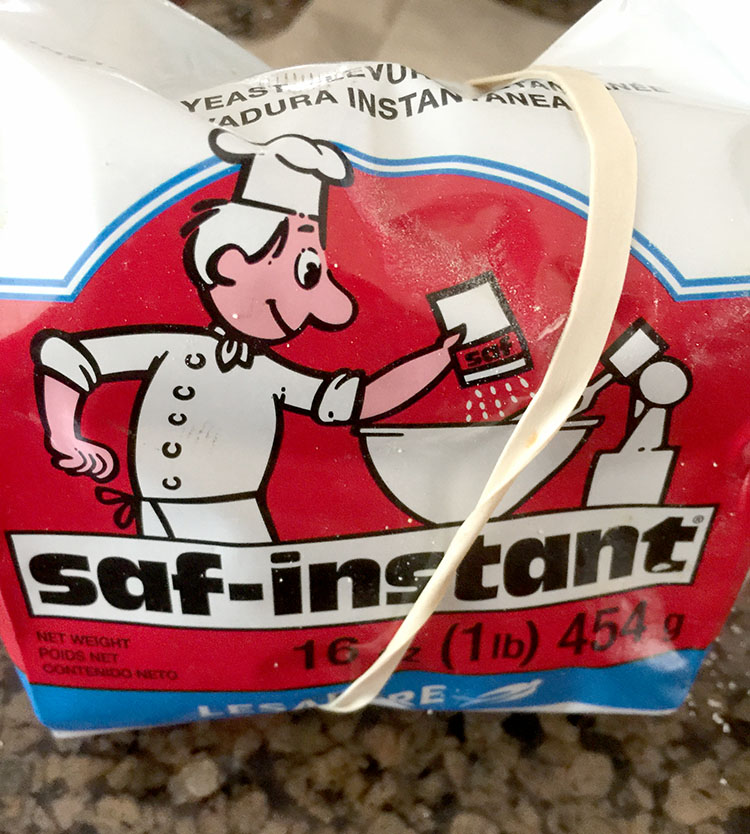
[I]’ve had great success with raising in recent years, I believe, because I use Saf -Instant yeast. It comes in large packages, but if kept sealed (I use an airtight container) stays fresh for a long time. It is almost always reliable to be effective and lively. It seems like my dough really bubbles up and rises so nicely with this type of yeast.
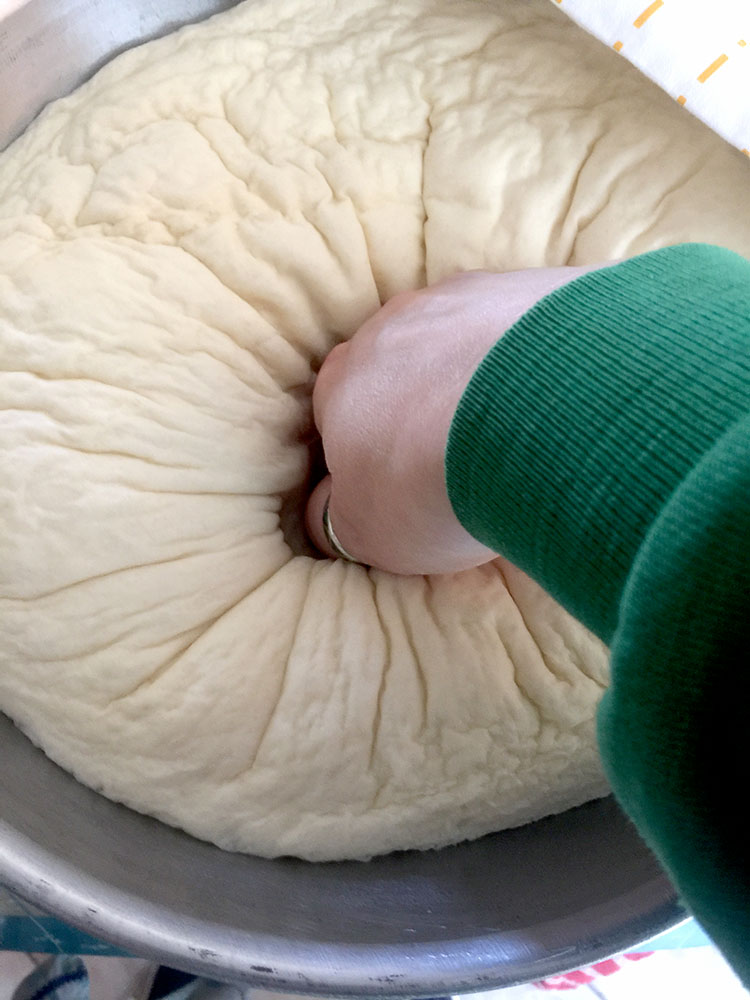
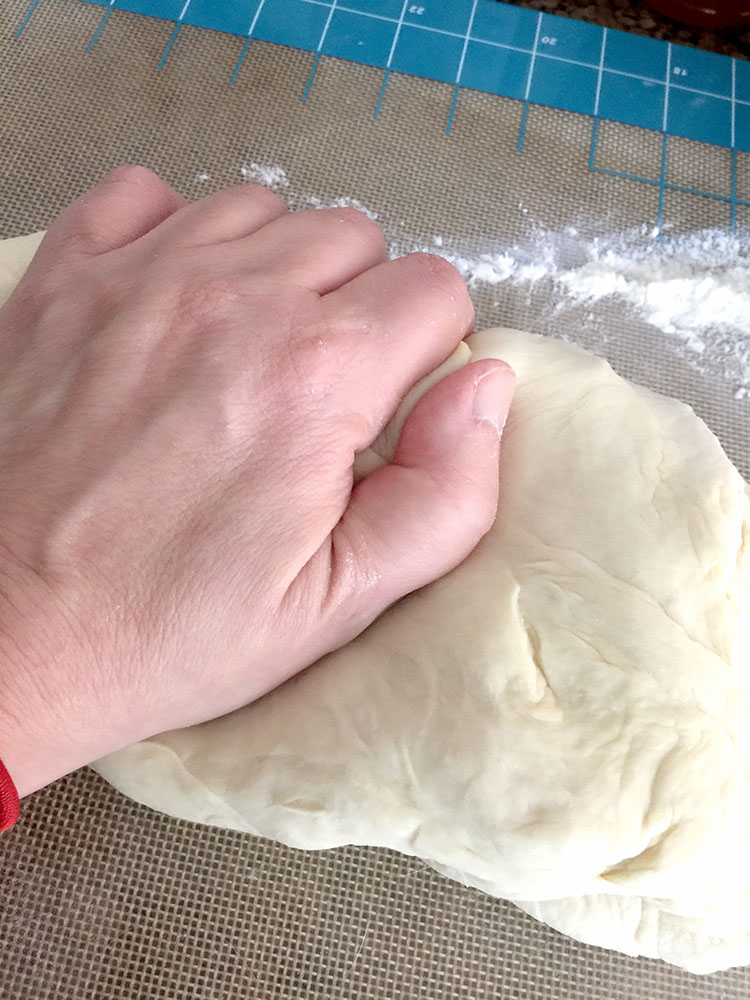
[M]y favorite part of the process, punching down the raised dough, deflated it and mostly got the bubbles out of it, although a few continued to appear as I rolled out the dough into a large rectangle on a lightly floured work surface.
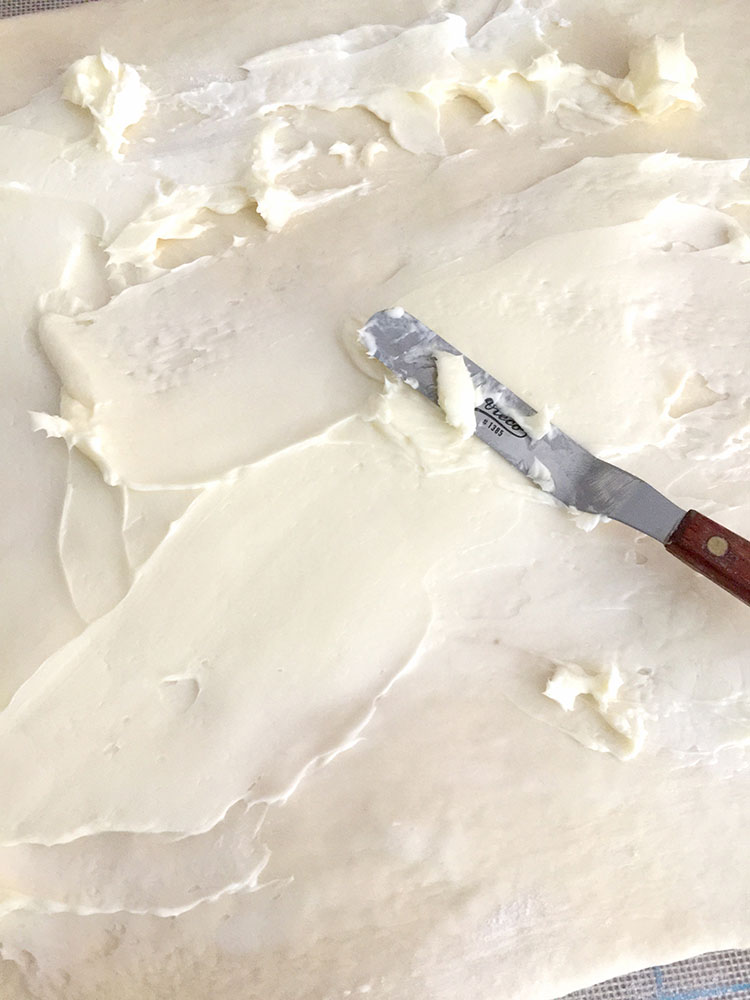
[I] take the liberty to spread A LOT of softened, salted butter (up to two sticks) across the surface of the rolled-out dough. Not only does this provide flavor and something for the cinnamon and sugar to cling to, but it helps make the interior of the cinnamon rolls soft and tender. So I slather it on!
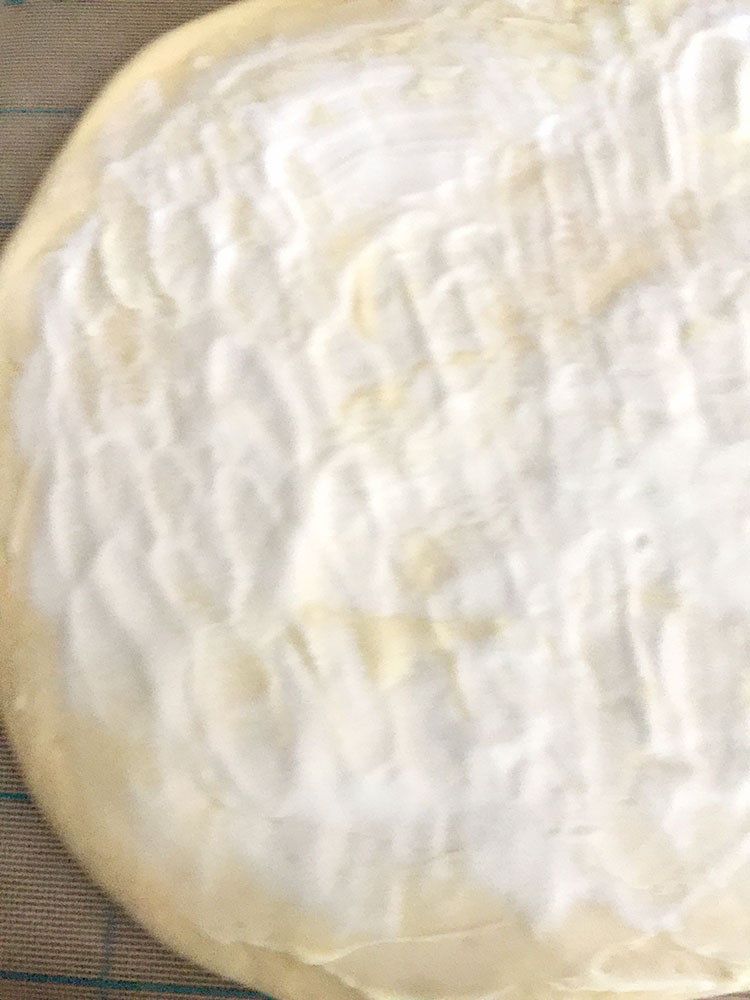
[M]y sugaring of the dough is done separately from the cinnamon. I could mix them together and sprinkle over the dough at the same time, but I follow what my mom did, I believe, in a process that enabled her flexibility in the amount of sugar and cinnamon used, without mixing up too much or too little of a combination, she just went straight away with each (also, less measuring cup involvement streamlines the process).
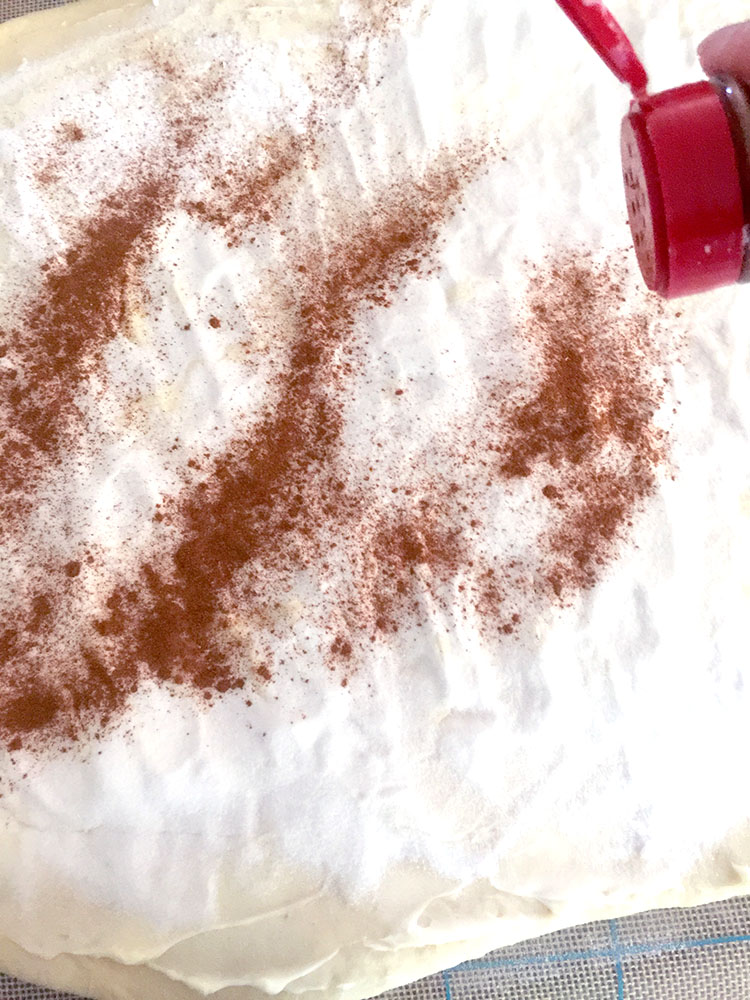
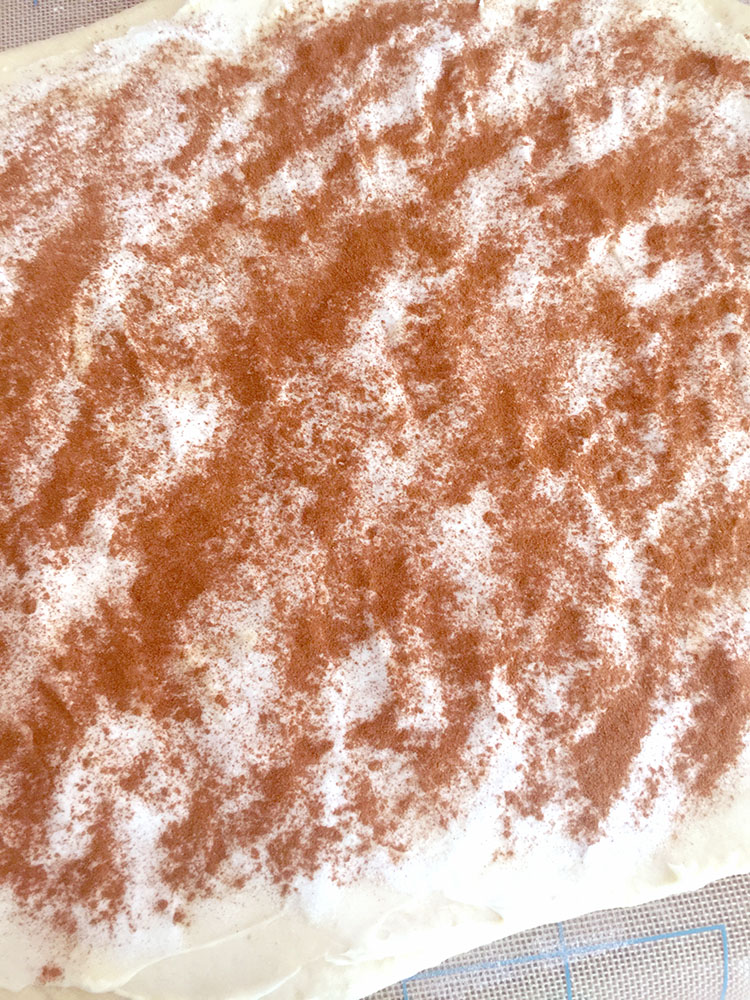
[L]ike her, I too am very liberal with the cinnamon sprinkling. There’s something therapeutic about casting a heavy dust of that sweet spice over the pristine layer of sugar. And the smell is always a needed balm.
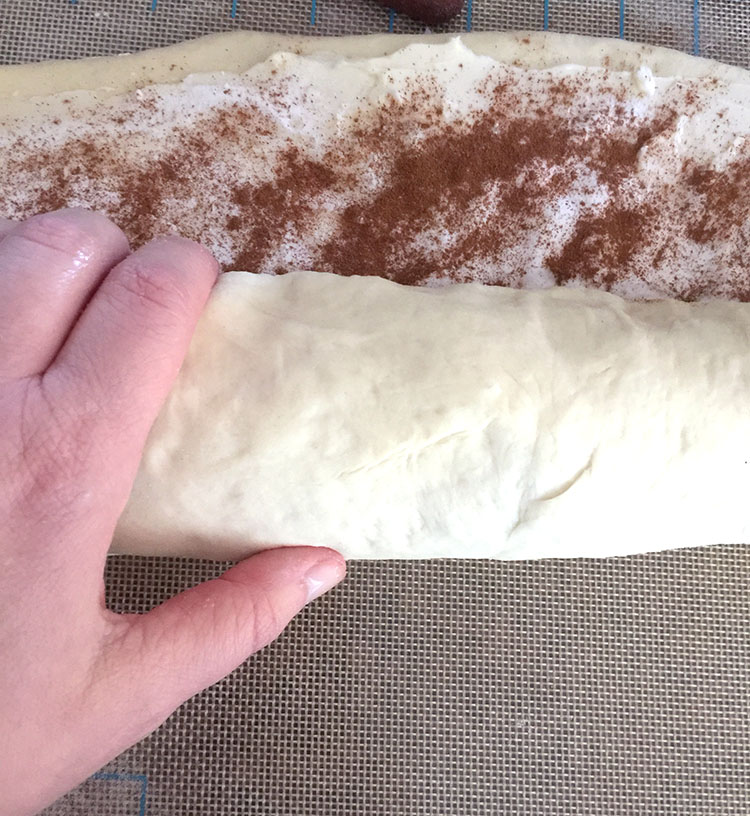
[T]here is also something very satisfying about rolling up dough for cinnamon rolls, seeing everything disappear, but knowing all that buttery, sugar-cinnamon sweetness is now swirled up and tucked in, as it should be.
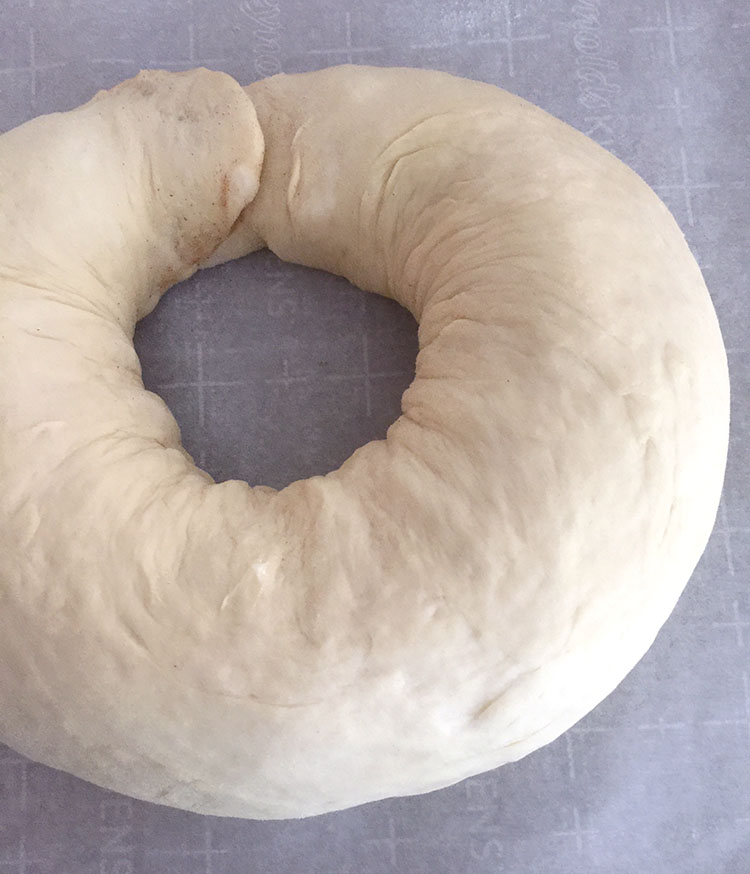
[I]n my previous king cake makings, I had fashioned a ring out of the rolled, filled (cream cheese) dough. This was similar, although the dough was less sticky, so it had to sort of be knotted together at the ends to form a closed circle.
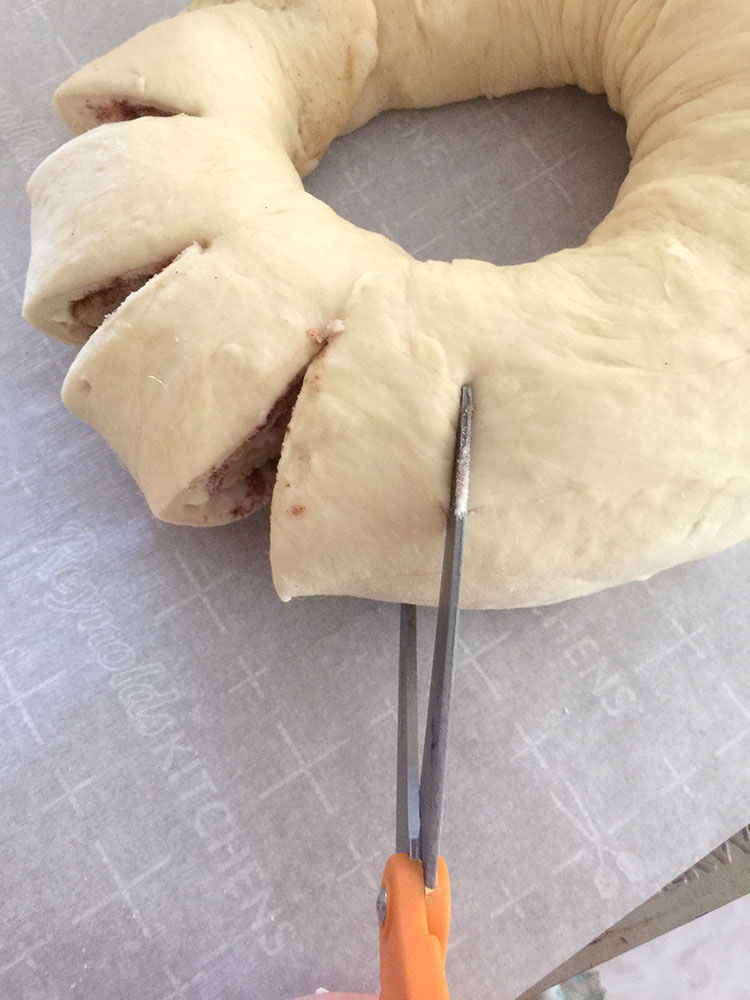
[I] was so excited to use my exclusively-for-the-kitchen clean shears to cut slits into the roll, two-thirds of the way through, in about 1-1/2-inch intervals.Â
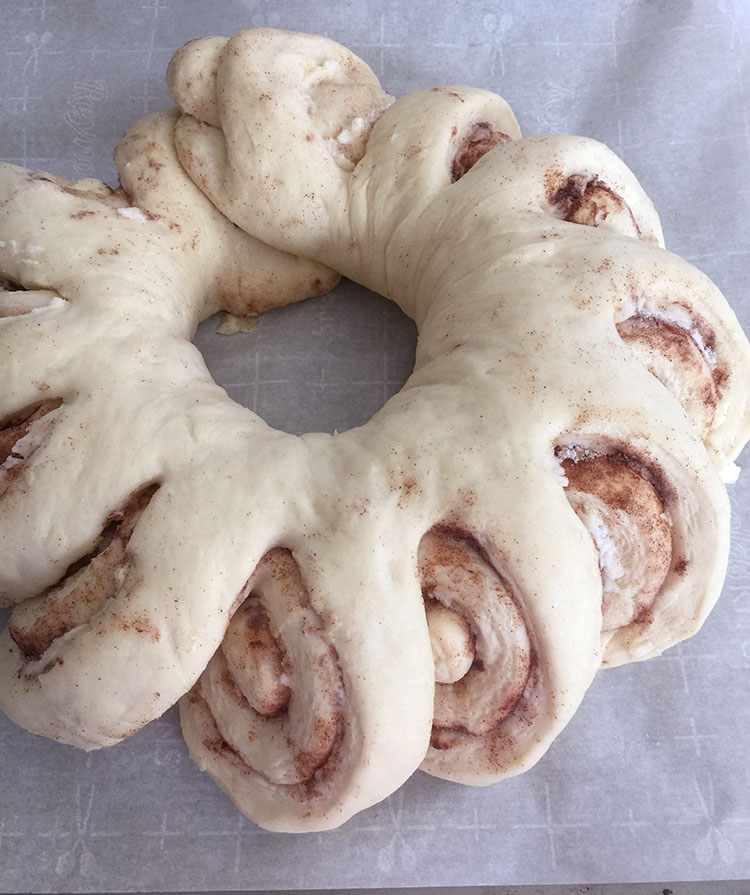
[I] slanted the sections slightly to open up the rolls in the tea ring…the extensive amount of butter was more out in the open at this point, but I knew it would be a good thing.
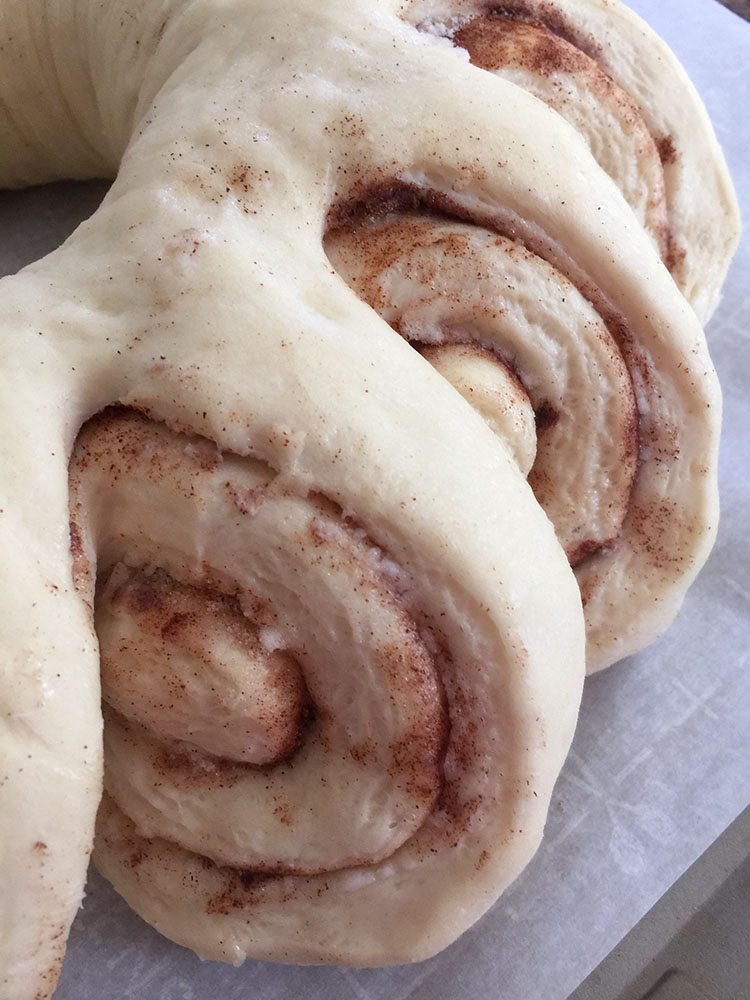
[I] let the ring raise for about 45 minutes…the yeast continued to deliver, bringing my roll ring to voluptuous status.
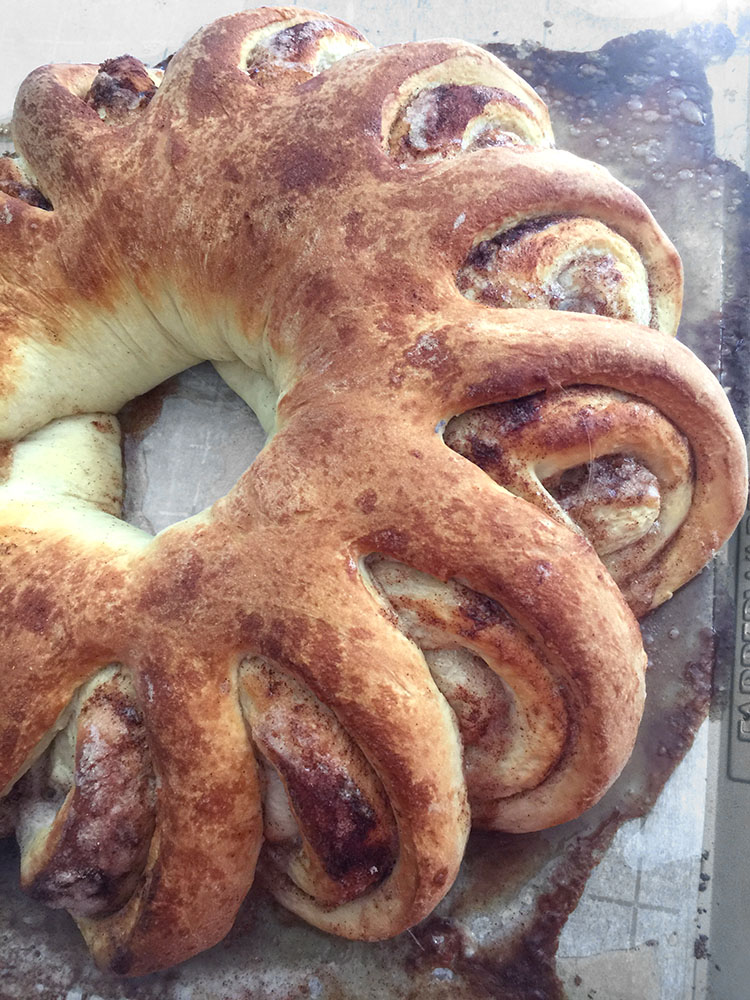
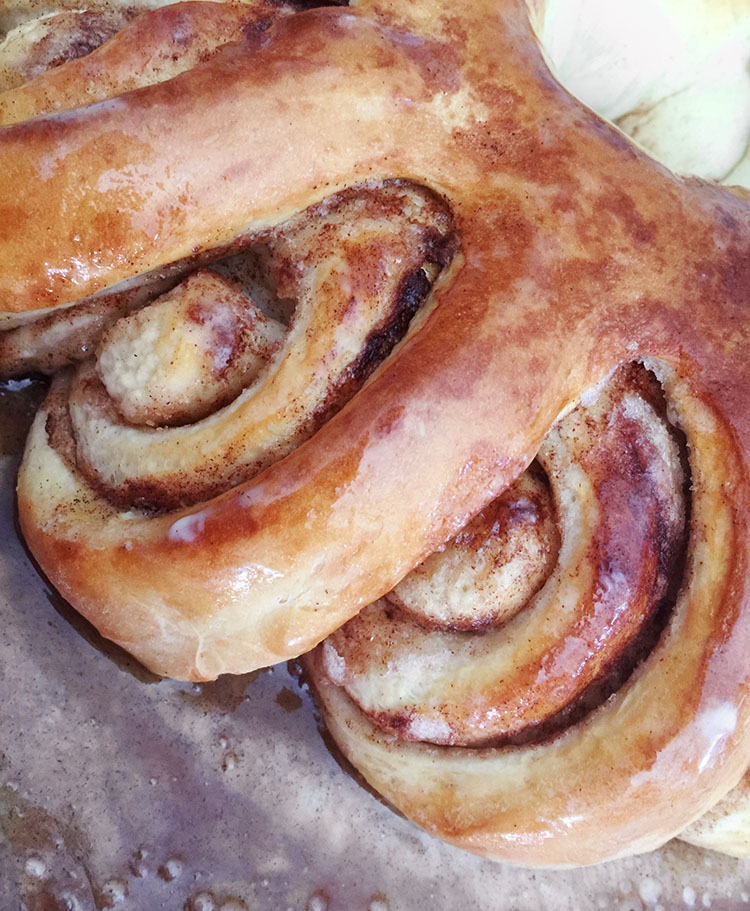
[I]n about 25 minutes in the oven at 350°, the roll ring was golden brown and lovely and smelling cinnamon-roll heavenly. Some of the extra butter did run out on the sheet pan (OK, maybe I’d go down to one stick next time…maybe), but absorbed in the parchment and did not cause too much of a mess. The ring was a thing of beauty, with the individual rolls showing their swirls of cinnamon, but the whole thing resembling the crown it was supposed to be.
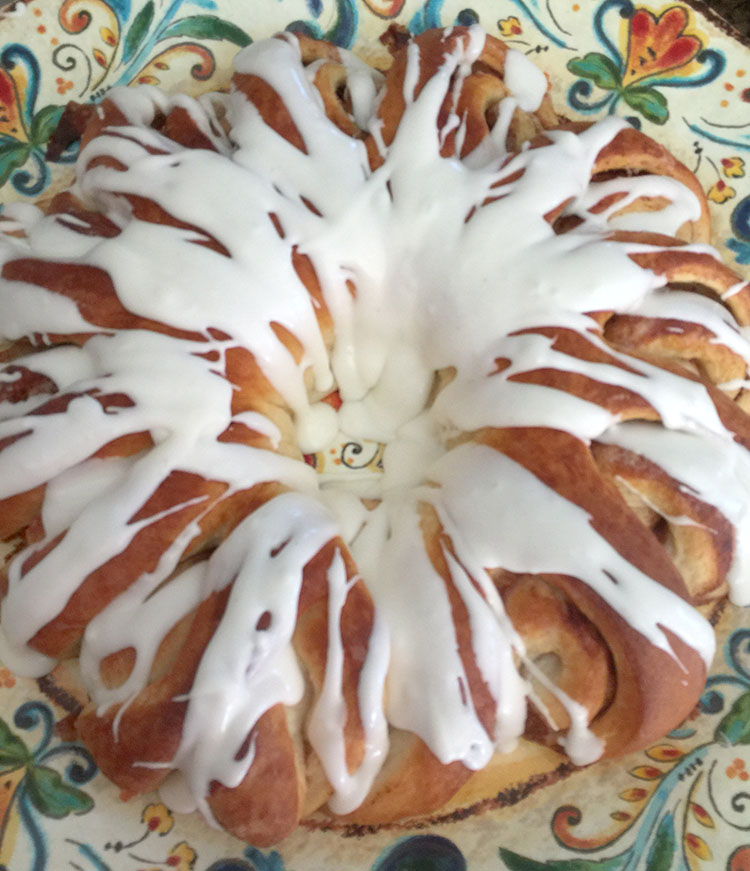
[O]nce the roll was cool, I gingerly got the weighty thing off the sheet pan and onto an adequately royal platter/throne. I made an easy glaze (also a riff on the simple one my mom always made), using confectioner’s sugar, a couple tablespoons of melted butter, a splash of vanilla and a few tablespoons of milk to make the mixture creamy and thick, but still able to drizzle.
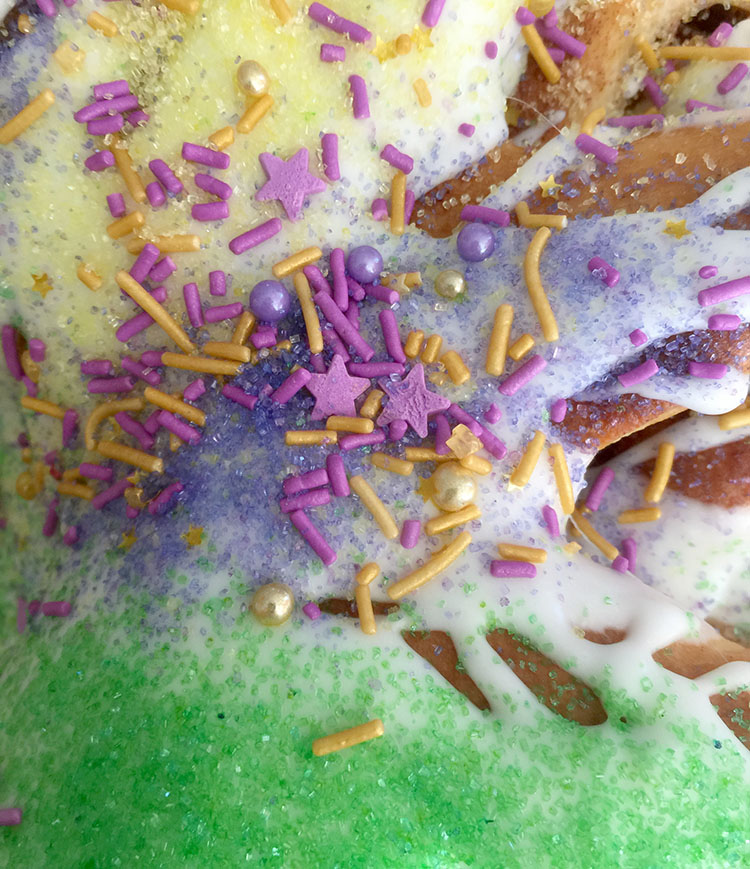
[A]s with King Cake tradition, color, as in colored sprinkles and sugar, are brought out and used to adorn the top in shades of gold, purple and green.
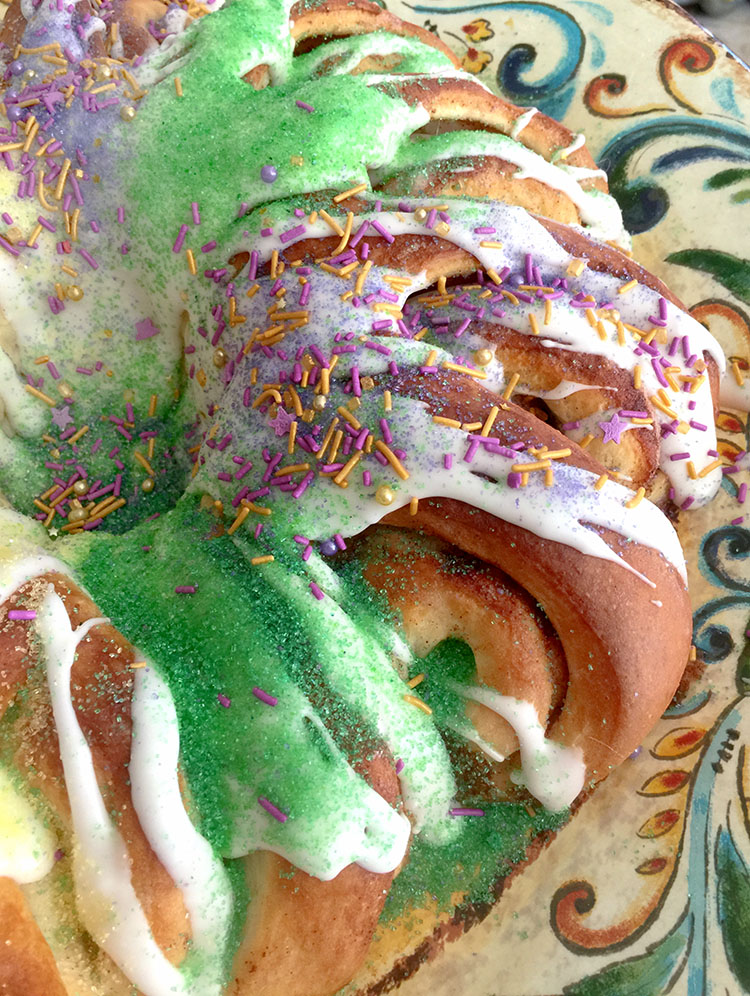
[T]he cinnamon roll ring could be finally crowned a king cake! I was delighted with how festive it looked! It was huge, but like a pan of cinnamon rolls, it could be eaten in rapturous installments.
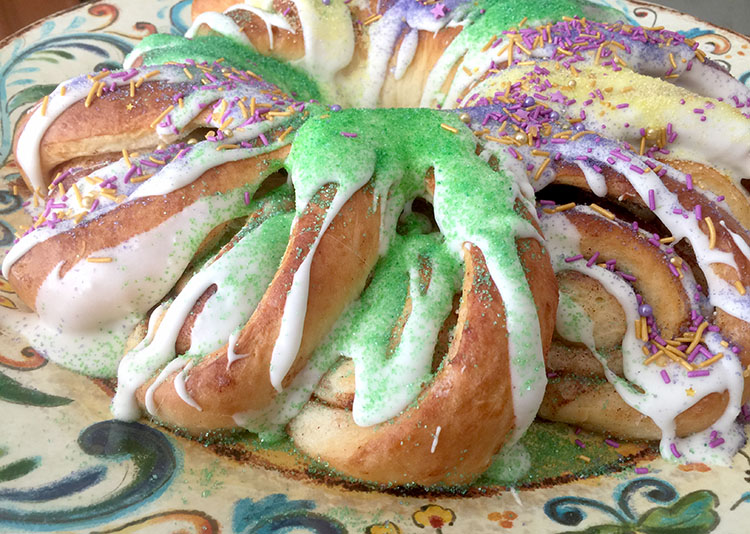
[W]as there a secret inside? A small baby representing the Christ child or a lucky penny? Some king cake secrets are meant to be kept. But what is not a secret is how a simple dough from a country kitchen was turned into a delicious, butter-and-cinnamon-laden, sweet decadence to celebrate the last of winter, its bright bedecking of colors a hope for the spring to come.
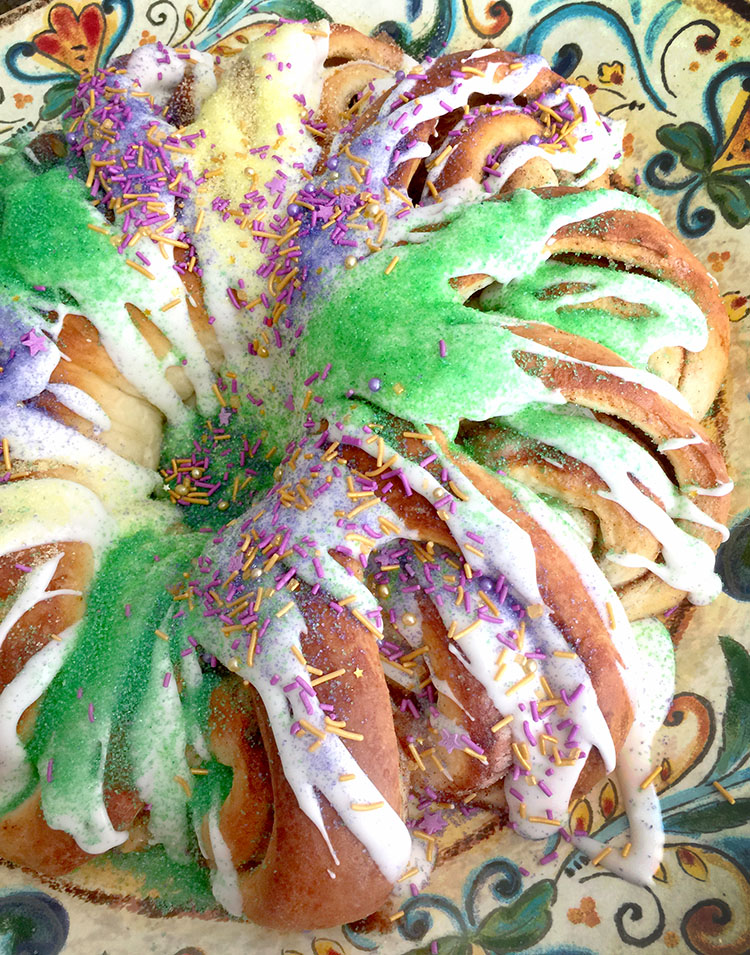
Cinnamon ‘Let the Good Times’ Roll King Cake
For the dough:
- 1 tablespoon salt
- 3 tablespoons sugar
- 2 pkgs. active dry yeast
- 2 cups milk
- 2 tablespoons butter
- 1 tablespoon shortening
- Approximately 7 cups of all-purpose flour
For the filling:
- 1 to 1-1/2 sticks salted butter, softened
- Granulated sugar
- Cinnamon
- For the glaze:
- 2 cups powdered sugar
- 2 tablespoons melted salted butter
- 1 teaspoon vanilla
- 3 tablespoons milk, or more as needed
- Colored sugar and sprinkles for decoration
In a medium saucepan over low heat, warm milk until butter and shortening are melted, allow to cool to lukewarm temperature. Place salt and sugar in a large mixing bowl. Pour in milk mixture, then sprinkle in yeast. Add enough flour to bring mixture to a pancake batter consistency, stirring with a wooden spoon. Continue stirring for 10 minutes or until very smooth.
Begin adding flour in small amounts incorporating well after each addition. When enough flour is added, one will not be able to stir with a spoon any longer. At this point, turn out onto a floured board, cover with bowl and let rest for a few minutes. Begin kneading and continue until the dough is smooth and elastic, about 10 minutes.
Place dough in an oiled bowl, cover with a clean towel and allow it to rise until doubled in bulk, about one hour. Punch dough down and return to floured board. Knead again or 3 to 4 minutes.
On a lightly floured board or large work surface, roll dough out into a large rectangle, approximately 1/2 to 3/4-inches thick. Spread the surface evenly with the softened butter. Sprinkle with an even, thick layer of granulated sugar and top that with a liberal sprinkling of cinnamon. Press the cinnamon and sugar lightly into the butter.
Roll the dough into an even roll, working from the longer edge. Place the roll, seam-side down on a large, parchment-lined baking sheet and form the roll into a circle, joining the two edges and pressing together to seal.Â
Using clean kitchen sears, cut slits 2/3 of the way through in the ring from the outside. Pull roll slices apart and slanted to one side so they are open and somewhat visible (looking like cinnamon rolls).
Cover ring with clean towels and allow to rise until double in size, about 45 minutes.
Bake ring approximately 25 to 30 minutes at 350 degrees until a golden brown. Brush or baste top with butter or margarine.
Allow ring to cool and remove from sheet to a platter. Make glaze by combining confectioner’s sugar, melted butter, vanilla and milk to whisk into a thick glaze that can still be drizzled over the ring. Glaze the ring in drizzles or spread over the rolls with an offset spatula. Sprinkle with colored sugar as desired. You can also insert a small plastic baby, coin or dry uncooked bean in the bottom of the king cake, as is tradition.